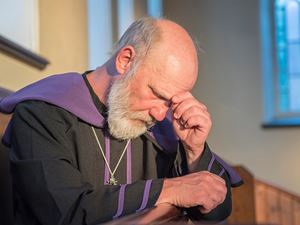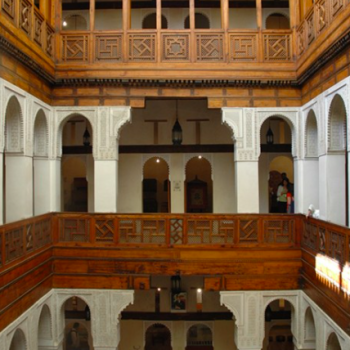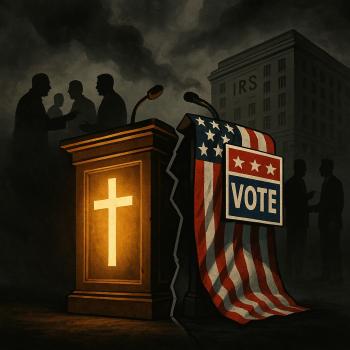
Many Christians, including Roman Catholics, use a special gesture called the sign of the cross when praying. This is an ancient practice dating to the earliest years of the Church and probably began as part of the baptismal rite when the church leader would mark the foreheads of the newly baptized with the shape of a cross. The 2nd-century Christian teacher, Tertullian, writes about the gesture as a regular devotional practice. “At every forward step and movement, at every going in and out, when we put on our clothes and shoes, when we bathe, when we sit at table, when we light the lamps, on couch, on seat, in all the ordinary actions of daily life, we trace upon the forehead the sign.”
Roman Catholics make the sign of the cross in many situations. When they enter a church building, there is usually a small font of holy water, and they will dip their fingers in the water and make the sign of the cross. This reminds them of their baptismal vows and prepares them to enter worship. Many also use the sign of the cross after saying a prayer of thanksgiving before a meal, when they arise in the morning, and when they go to bed at night.
Early Christian writers commended the practice of making the sign of the cross, for the Cross was the great act of God by which evil was defeated. In tracing the sign over the head or the heart, the believer claims the work of Christ for him or herself and wards off evil. Cyril of Jerusalem, a 4th-century theologian, wrote, “Be the Cross our seal made with boldness by our fingers on our brow, and on everything; over the bread we eat, and the cups we drink; in our comings in, and goings out; before our sleep, when we lie down and when we rise up; when we are in the way, and when we are still. Great is that preservative; it is without price, for the sake of the poor; without toil, for the sick; since also its grace is from God. It is the Sign of the faithful, and the dread of devils.”
Since that time, making the sign of the cross has been a big part of most liturgical traditions, including Roman Catholic, Orthodox, Anglican, Lutheran, and some Methodist communities. Most Evangelicals, Pentecostals, and Reformed Christians do not use the gesture. Over the years, the gesture has expanded to a large tracing of the cross made over the head and chest. The believer begins at the forehead, moves down to the chest, then to the left shoulder and then to the right. It is usually accompanied by the words “In the Name of the Father and of the Son and of the Holy Spirit. Amen.”
Read more about how Catholics incorporate their spirituality in daily life here.
3/23/2021 6:32:40 PM










